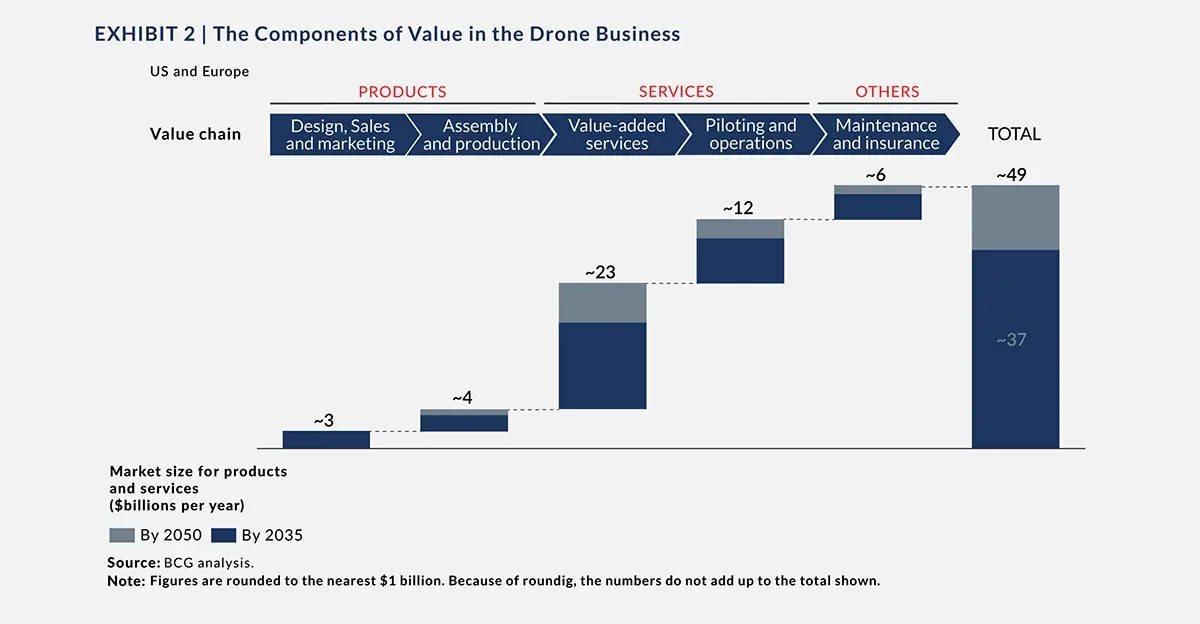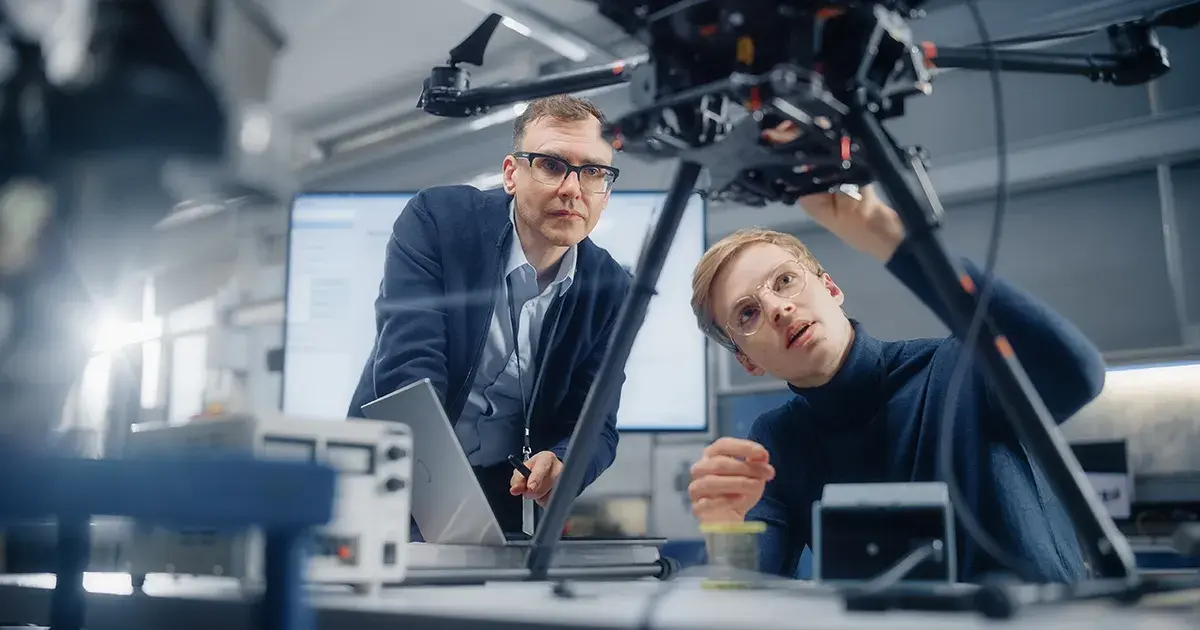
MacroFab Blog
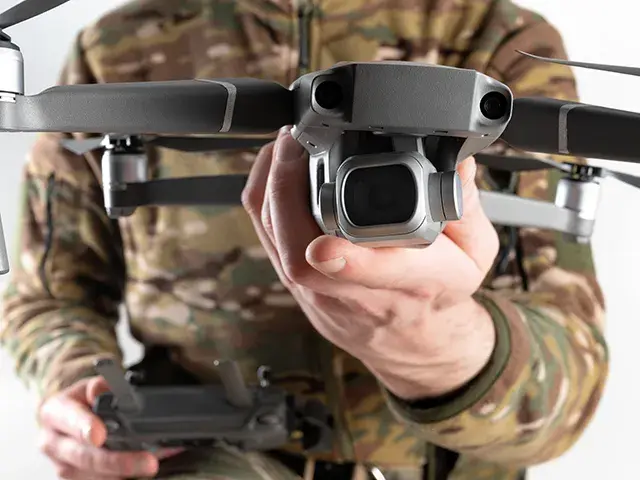
Many envision drones in one of two ways: as tiny toys fluttering in the backyard or as menacing military machines soaring high above. Practical applications, however, are drones’ real future. Businesses worldwide, spanning diverse sectors, are discovering how drones can enhance their operations and deliver unmatched value.
In this blog, we’ll dive into what drones really are & explore their current commercial applications. Plus, we’ll take a peek into the exciting future of where drones might take us next.
What is a Drone?
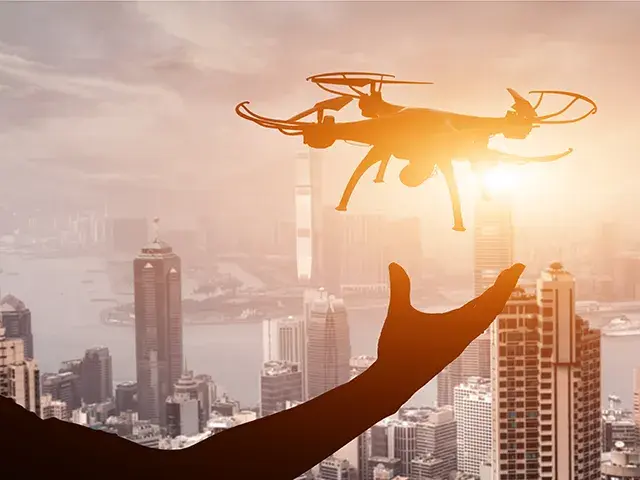
Drones, often referred to as unmanned aerial vehicles (UAVs), are aircraft that fly without a human pilot onboard. This label applies whether the drone is massive enough to carry a person or small enough to fit in your pocket. Typically, a remote pilot controls these robotic fliers, but fully autonomous drones are also available. Initially created to offer a safer, more cost-effective alternative to manned aircraft, drones soon found their way into commercial markets, enhancing operational efficiency and offering some fun as well.
Drones, regardless of their shape or size, consistently feature key components: sensors, motors, microcontrollers, and a fuel source. The significant reduction in commercial drone prices over recent years may be attributed to the inclusion of components common to smartphones, such as Wi-Fi, Bluetooth, cameras, and GPS modules. This cost efficiency has opened doors, making them more accessible for both businesses and individual consumers.
Drone Market Size
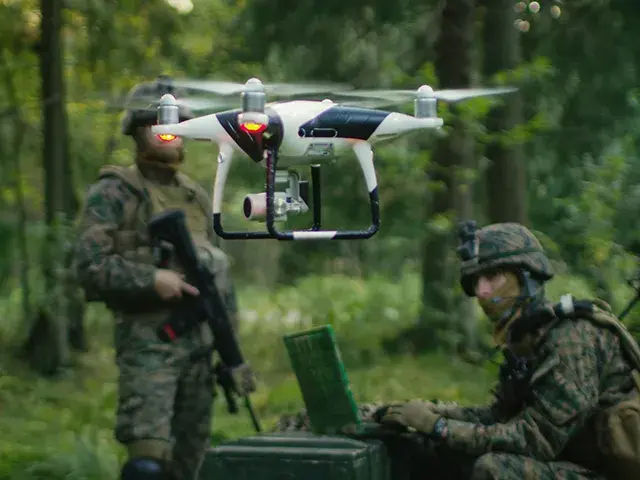
Over the past decade, the drone market has experienced remarkable growth across the consumer, commercial, and military sectors In 2022, the global drone industry was valued at $26.2 billion, with the military sector contributing a significant $12 billion.
Here’s where it gets interesting: the military sector projects a Compound Annual Growth Rate (CAGR) of over 7% for the next five years.
However, the worldwide market is set to outpace it, targeting a growth rate of nearly 8% CAGR. If this momentum continues, we can expect the global drone market to reach an impressive $38.3 billion by 2027, with non-military drone projects slowly becoming ever-more dominant.
A significant part of the growth is driven not by drone hardware, but by how it is manipulated to perform dangerous or difficult tasks.
The Value of Drones-as-a-Service(DaaS)
Checkpoint
By 2050, value-added services could account for 73% of the drone market’s revenue.
With drone hardware now more wallet-friendly to manufacture and buy, the real game-changer in the industry is pivoting towards drones as a service (DaaS). It’s not just about the drones anymore—it’s the actionable data and efficiencies they bring that businesses are chasing. Dive into the numbers: Boston Consulting Group’s research suggests that by 2050, value-added services could account for 73% of the drone market’s revenue. So, it’s clear: the value isn’t just in the flight, but in the insights they deliver.
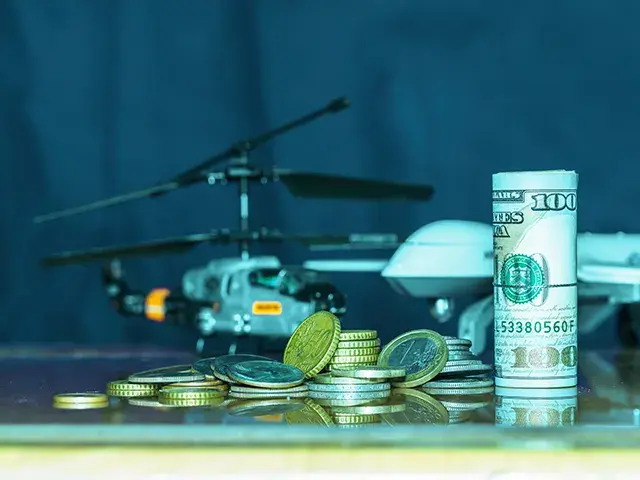
2050 Revenue Share of Drone Market:
- Products
- Design, Sales, Marketing: 6%
- Assembly & Production: 8%
- Services
- Value-Added Services: 48%
- Piloting & Operations: 25%
- Other
- Maintenance & Insurance: 13%
Commercial Uses for Drones
Drones have rapidly emerged as indispensable tools across numerous commercial sectors. As a result of their multifaceted applications, they have evolved from mere recreational uses to pivotal roles that improve safety and efficiency. Aside from their incredible video capabilities, drones offer groundbreaking innovations in delivery & 3D mapping that are reshaping business operations for the better. Here are some of the ways drones are integrated into today’s businesses.
Video Collection and Photography:
From showcasing real estate properties to conducting wartime reconnaissance, drones are making their mark with video capabilities. Equipped with high-resolution and multi-spectral cameras, including RGB-NIR, NVDI, and UV NIR, drones have found a place in various sectors. They’re now used for tasks like mapping infrastructures, inspecting energy projects, & monitoring agriculture. The value they bring is evident across industries.
For years, drones have captured breathtaking aerial photography images, offering us a unique bird’s eye perspective of cities, buildings, and sprawling landscapes. It’s become a familiar sight, yet the awe of seeing the world from that vantage point never truly fades.
Inspections:
Drones are becoming indispensable for inspection processes across a wide range of industries. The utility of these aerial tools is evident: they enable inspectors to gather essential data without ever leaving the safety of the ground. From navigating the tight confines of industrial tanks and boilers to assessing the integrity of towering structures such as wind turbines, cell towers, and amusement park ride supports, drones streamline the inspection process.
This not only reduces potential risks to human inspectors but also increases efficiency. Drones can often complete an assessment in the time it would traditionally take an inspector just to access the site. The adoption of drones marks a significant advancement in ensuring safety and operational excellence in inspections.
Delivery:
The concept of drone delivery, once viewed as futuristic, is rapidly becoming a part of today’s logistics landscape. Flytrex, for instance, has made significant headway, specializing in food delivery in targeted regions of Texas and North Carolina, completing tens of thousands of drone deliveries annually.
Additionally, it’s noteworthy to mention Zipline and Google’s affiliate, Wing, which have established themselves as the first and second largest drone delivery enterprises globally. The industry is evolving fast, and these companies are leading the way.
3D Mapping:
Drones, equipped with the ability to create 3D models, have revolutionized surveying methods, offering capabilities that traditional techniques can’t match. By capturing data with remarkable speed and accuracy, and then integrating this with advanced photogrammetry software, they produce detailed and accurate 3D models. Models like these can be meticulously analyzed, offering comprehensive insights into a variety of fields.
In urban planning, these 3D representations are invaluable. Architects and landscape designers use these models to guide their visions, ensuring public spaces evolve cohesively. Aerial models provided by agricultural drones provide a better understanding of soil composition, crop diseases, and crop yields.
Meanwhile, such models help track progress in the construction industry and inform site layouts. In order to make accurate comparisons, real estate professionals align properties with service titles using 3D maps.
Future Drones: Smaller, Stronger, Autonomous
The future of drone technology promises remarkable advancements. As the technology evolves, we anticipate the development of even smaller drones, surpassing even the compactness of today’s Black Hornet Nano. Conversely, larger drones designed for the transportation of goods will grow in size, endurance, and capability. It’s not far-fetched to imagine drone taxis becoming an integral part of urban transportation in major cities worldwide.
The rapid development of drones is closely tied to advances in communication technology. 5G’s ultra-reliable, low-latency communication allows drones to make instant, real-time decisions, enabling them to become increasingly autonomous. With projections indicating the onset of 6G networks by 2030, offering unparalleled terahertz frequency bands and superior edge computing capabilities, autonomous drones are poised to revolutionize several industries.
PCBA Production: The Heartbeat of Modern Drones
Behind every sophisticated drone lies an intricate Printed Circuit Board Assembly (PCBA) that powers its operations. As drones become more advanced and versatile, the importance of high-quality PCBA production becomes paramount.
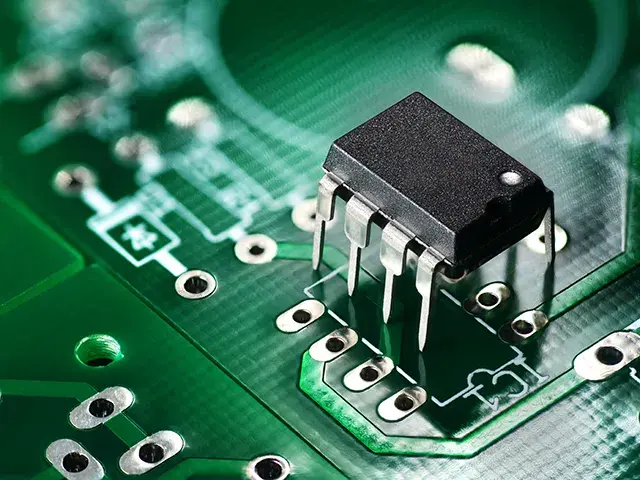
Complex Circuitry for Advanced Functions: Modern drones are not just about flying; they come loaded with sensors, cameras, and communication modules, all of which require meticulously designed PCBAs. These assemblies manage various tasks, from stabilizing the drone in the air and capturing high-resolution images to communicating with the remote pilot or base station.
Miniaturization and Efficiency: As drones aim for sleeker designs and longer flight durations, PCBAs must be compact yet powerful. Advanced PCBA production
techniques allow for the integration of multiple functionalities on a single board, ensuring drones are lightweight without compromising on features.Durability and Reliability: Drones often operate in challenging conditions, be it varying temperatures, humidity levels, or physical impacts. The PCBA, being the electronic backbone of the drone, must withstand these conditions. Modern PCBA production emphasizes not just functionality but also durability, ensuring drones remain reliable across multiple flights
and environments.Cost-Effective Production for a Competitive Market: With the commercial drone market becoming increasingly competitive, manufacturers aim to produce high-quality drones at competitive price points. Advanced PCBA production techniques play a pivotal role in this, ensuring that drones are both feature-rich and affordable.
Customization for Specific Applications: Different drones serve different purposes, from agricultural surveys and real estate photography to delivery and emergency response. Custom PCBA designs are tailored to these specific needs, ensuring that the drone excels in its designated function.
As the drone industry continues to grow and evolve, the significance of PCBA production will only amplify. It’s the seamless integration of sophisticated PCBAs that drives drones’ unparalleled capabilities, making them indispensable tools in today’s technologically advanced world.
Conclusion
The evolution of drone technology demonstrates a significant shift from its early recreational and military applications to now serving as indispensable tools in various industries. Their wide-ranging uses, from enhancing business operations to enabling novel technological applications, highlight their transformative potential.
As we anticipate further advancements, especially with the forthcoming introduction of 6G networks, drones are poised to be a cornerstone of future technological innovations and commercial applications. Their continued growth promises to shape the way industries operate, underscoring the critical role they’ll play in our future.
Related Topics
The Future of UAV Design
We'll discuss where unmanned aerial vehicles (UAVs) technology currently stands and where it may go.
How Can a Box Build Benefit Your PCBA Design?
PCBA box build is a sophisticated process involving the design, production, and construction of an electromechanical system that goes beyond a PCBA.
Insider's Guide to Navigating Box Build PCBA Projects
This guide will help you become familiar with box build assembly, decide if it’s right for your PCBA project.
About MacroFab
MacroFab offers comprehensive manufacturing solutions, from your smallest prototyping orders to your largest production needs. Our factory network locations are strategically located across North America, ensuring that we have the flexibility to provide capacity when and where you need it most.
Experience the future of EMS manufacturing with our state-of-the-art technology platform and cutting-edge digital supply chain solutions. At MacroFab, we ensure that your electronics are produced faster, more efficiently, and with fewer logistic problems than ever before.
Take advantage of AI-enabled sourcing opportunities and employ expert teams who are connected through a user-friendly technology platform. Discover how streamlined electronics manufacturing can benefit your business by contacting us today.
